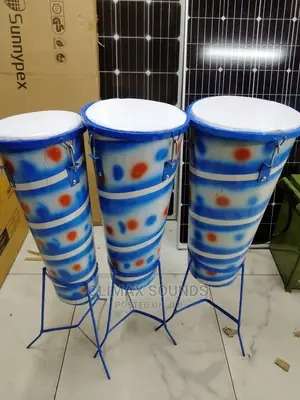Description
Local variations of the bongo or conga drum may have unique features influenced by regional materials, craftsmanship, and cultural traditions. Locally made bongo drums iscrafted from indigenous woods such as mahogany, cedar, or local hardwoods. The drumheads is made from animal hides such as goat or cow skin, stretched over the drum's openings. These materials provide a unique sound and durability suited to the local environment.The drums are typically handcrafted using traditional methods passed down through generations. Skilled artisans shape the wooden shells, often using simple hand tools. The drumheads are carefully stretched and secured to the drum using rope tuning systems or metal hardware, depending on local traditions. Local bongo drums feature decorative elements reflective of regional culture and aesthetics. This could include carved designs, painted patterns, or inlaid motifs that hold cultural significance. These embellishments add visual appeal and further connect the instrument to its cultural heritage. The size and shape of the drums may vary depending on local preferences and playing styles. Some regions may prefer smaller, more compact drums for portability and agility, while others may favor larger drums for their resonance and volume.While the basic playing technique of bongo drums remains consistent, local variations may incorporate unique rhythms, styles, and techniques specific to the region's musical traditions. Players often develop their own distinctive playing styles influenced by their cultural background and musical influences. Bongo drums hold cultural significance in many communities, often playing a central role in traditional music, dance, and ceremonial rituals. They serve as symbols of cultural identity, heritage, and community cohesion, connecting people through shared musical traditions and expressions




